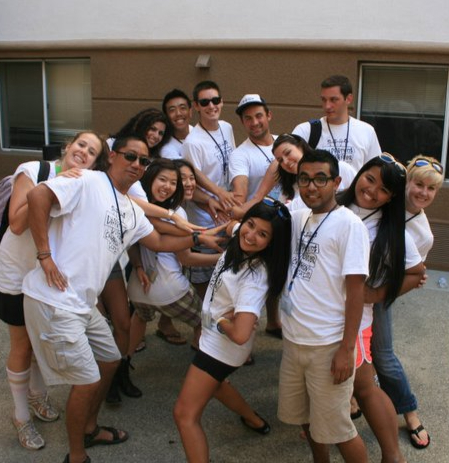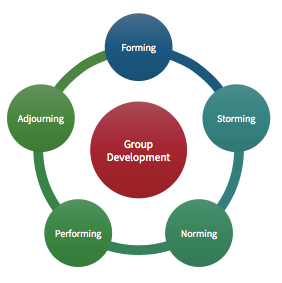Group Development Model
- Leadership Inspirations Staff

- Oct 15
- 3 min read


The Group Development Model helps facilitators understand the different stages that your group may experience as they work together. Learn strategies to help move your team through each stage effectively!
FORMING
My group is new or going through a personnel change.
Main Strategy When Your Team Is Forming: Build team spirit and comfort while providing lots of structure for all activities.
Key Elements
New group
New situation
Members unsure
Low levels of trust
Group needs direction
Commitment is low
Group skills are unrefined
Members are over-dependent on leader
Facilitator Strategies
Warm up exercises
Disclosure exercises
Build buy-in
Create common goals
Implement groundrules
Clarify roles and responsibilities
Define accountabilities
Provide clear process
Encourage participation
Evaluate team effectiveness
STORMING
My group is focused more on individual needs than on group cohesion, this may result in conflict or competition.
Main Strategy When Your Team Is Storming: Listen, address conflict, referee assertively, resolve issues collaboratively.
Key Elements
Conflict emerges
Frustration sets in
Animosities develop
Cliques can form
Members can reject leader
Power struggles
Emotional arguing
People feel excluded
May be internal (eg. lack of confidence)
Lack of skill is evident
Facilitator Strategies
Expect and accept tension or resistance
Stay neutral and calm
Create safety
Honestly admit that there is conflict
Help members identify and solve issues
Invite input and feedback
Make interventions
Assertively referee conflict
Train members
Encourage communication
Continue to build sense of team
NORMING
My group has recently established an interdependent group identity and has developed a sense of trust, clarity, and purpose.
Main Strategy When Your Team Is Norming: Support team improvement efforts and encourage member empowerment.
Key Elements
Members ‘own’ problems
Conflicts are resolved
Power issues are resolved
Team redefines its norms
Performance problems are corrected
Facilitator Strategies
Offer methods for feedback
Solve problems
Invite personal feedback
Offer further training
Support members while they make improvements
Share power
Mediate personality clashes
Coach and counsel individuals
Share the leadership role
PERFORMING
My group consistently has a high level of productivity, autonomy, and achievement.
Main Strategy When Your Team Is Performing: Build agendas together, share facilitation responsibilities, collaborate, act as a resource.
Key Elements
High productivity
Conflicts managed by members
Commitment to goal(s) is high
Roles and responsibilities are clear
Members behave in a facilitative manner
Team continuously improves itself
Members feel committed and bonded
Facilitator Strategies
Collaborate with members on process
Rotate facilitation duties
Offer your expertise
Help the team recognize and celebrate success
ADJOURNING
My group is disbanding or going through a transition.
Main Strategy When Your Team Is Adjourning: Reflection, Evaluation, and Celebration!
Key Elements
Group has achieved goal
Time together has ended
Feel sense of accomplishment
May feel sense of sadness or loss
Facilitator Strategies
Evaluate time together
Recognition and appreciation activities
Celebrate successes
Share lessons learn and discuss how to take lessons back to others

Leadership Inspirations, the creators of TGIRF, truly believe this game is really FUN! Like, REALLY fun. 🤩 Since 2006, they have worked relentlessly to find the best ways to mix fun and learning. With their army of highly skilled facilitators, they have built a proven track record for providing engaging, interactive, research-based programming for thousands of students, educators, athletes, and professionals. Click HERE to learn more about these awesomely awesome professionals with backgrounds in education, leadership, organizational development, counseling, psychology, and more...

Comments